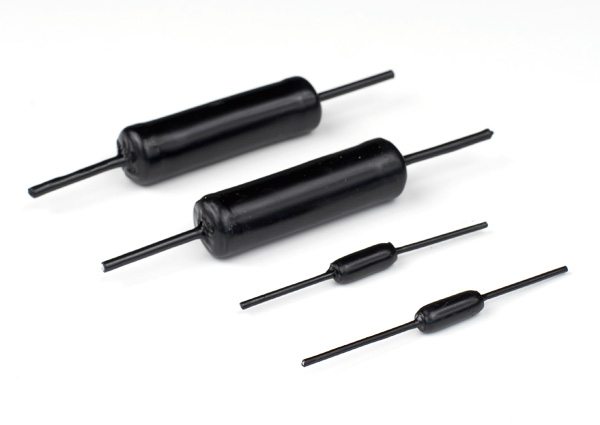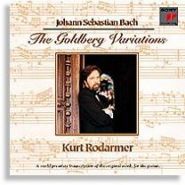Bybee Technologies Quantum Purifiers:
| Bybee Technologies Quantum Purifiers: |
| Golden Goddess Super Effect Internal Bullets |
|
|
|
February 2011 |

Tonight I reread a review I’d written some months before of the LessLoss Blackbody. These free-standing devices had an elusive but almost magical effect on the music. Having now lived with them for months, it was interesting to be reminded of their place in the evolution of my stereo. And I was especially struck by the descriptive language I had used in that review, much of which could be transposed verbatim into the current review of the Bybee Golden Goddess Super Effect Internal Bullets (hereafter SEIBs). Which should perhaps not be too surprising since both devices are ostensibly aimed at maintaining signal purity by the suppression of noise. One by absorbing extraneous electromagnetic radiation, the other by filtering the inherent noise of electron flow. Both devices use proprietary technology and both are shrouded in some degree of mystery. We don’t know exactly what’s inside either one, or exactly what those insides actually do — not in the sense that, for example, we know what’s inside a resistor or a capacitor, and how those insides behave in the presence of electric current. Jack Bybee is quoted in a Dick Olsher review from 2002: “[W]hen developing the technology we did not fully understand why certain metal oxides absorb or damp specific frequencies and to the best of my knowledge we still do not.” While LessLoss may be secretive for purely business reasons, Bybee Technologies is secretive also for national security reasons. You’ve probably heard before that the quantum purifier was originally developed by Jack Bybee for U.S. Naval submarines and exactly how it is put together is, in the immortal words of J. Edgar Hoover, “a secret” in compliance with Federal law.
While we don’t know exactly what’s inside these devices or specifically what those insides do on a physical level, we do know something of the purifier’s effect in reducing a certain type of noise called “1/f noise.” 1/f noise is inversely frequency dependent; like pink noise its spectral density increases as the frequency decreases. Bybee states that 1/f noise occurs primarily in solid-state devices and is significant below 2,000 hertz, well within our ears’ most sensitive range. Like thermal (white) noise its source lies in the quantum realm, but unlike thermal noise, its spectrum correlates with the musical signal, so it tends to not draw attention to itself. But while 1/f noise may not be clearly audible, it is insidious. It is a special form of distortion that rides the waves of an audio signal. As Dick Olsher notes, “Once buried within the music, it is reasonable to speculate that 1/f noise diffuses image outlines and adulterates harmonic textures.”
(Another benefit provided by Golden Goddess purifiers — inverse dispersive delay effect — is not relevant to AC power where only frequencies of 50Hz or 60Hz are concerned, but is valuable when a quantum purifier is in the signal path. Because high frequencies propagate through wire more rapidly than low frequencies, there is a 21 picosecond dispersive delay built in that helps realign frequencies. Bybee describes the perceived effect of restoring this alignment as a “…more impactful and coherent reproduction of program material.”)
 Bybee purifiers are starting to show up in high end audio equipment, as well as in specialty applications. There are power cords and dongles and loudspeaker connectors, and multi-pinned modules for power supply rails (which are active rather than passive devices), as well as the quantum purifiers themselves, resistor-like cylinders with axial leads for the DIY audiophile. I believe their presence in home stereos will increase as more audiophiles experience the unique contributions of Jack Bybee’s creations. It’s the nature of the beast that even a brilliant circuit design executed with impeccable care, using the best quality components, will still benefit from quantum purifiers. I was pleased to discover a local example of this, a company called Reflection Audio — just down the road from George Lucas’s Skywalker Ranch — that designs and builds preamplifiers and power supplies. Their OM1 Quantum preamplifier uses eight Bybee purifiers. I can readily understand this decision where the designer is shooting for the very best possible sound quality. I hope and trust more manufacturers at the pricier end of things will follow suit.
Bybee purifiers are starting to show up in high end audio equipment, as well as in specialty applications. There are power cords and dongles and loudspeaker connectors, and multi-pinned modules for power supply rails (which are active rather than passive devices), as well as the quantum purifiers themselves, resistor-like cylinders with axial leads for the DIY audiophile. I believe their presence in home stereos will increase as more audiophiles experience the unique contributions of Jack Bybee’s creations. It’s the nature of the beast that even a brilliant circuit design executed with impeccable care, using the best quality components, will still benefit from quantum purifiers. I was pleased to discover a local example of this, a company called Reflection Audio — just down the road from George Lucas’s Skywalker Ranch — that designs and builds preamplifiers and power supplies. Their OM1 Quantum preamplifier uses eight Bybee purifiers. I can readily understand this decision where the designer is shooting for the very best possible sound quality. I hope and trust more manufacturers at the pricier end of things will follow suit.
When, during a telephone conversation, Clement Perry highly praised Bybee power cords, I decided to indulge a long-standing curiosity about quantum purifiers and proposed a review. I requested and received several Golden Goddess SEIB purifiers, which are designed for high current applications like filtering AC power. There are other quantum purifiers for lower power applications, but because I have had several eye- and ear-opening experiences with AC power purification in recent years, I opted for that approach and installed them inside my amplifiers in series with the IEC male sockets. (This is an admittedly unusual gambit for an end user and I do not recommend it. First, such modifications should not be undertaken without lots of prior experience working with electrical circuits, tools, soldering and crimping equipment. Second, in most cases such modifications will void your manufacturer’s warranty. And third, remember Murphy’s Law? Best to stick with OEM power cords or dongles.)
As I had also found with the Blackbodies, it was remarkably easy to listen to music at higher SPLs. The effect was rather wonderfully enhanced by the SEIBs. This may be because the levels of distortion and noise are reduced sufficiently not to draw any attention to themselves, conscious or unconscious, even when the volume level is high. Or maybe what’s happening is more abstruse. A reduction in group delay. A reduction of intermodulation distortion. Extremely subtle details emerging from a reduced noise floor. Or maybe what I’ve heard referred to as a ‘restoration of harmonic relationships’ — which I suspect is a clever way of repackaging the more pedestrian phrase ‘lowering harmonic distortion.’ Or maybe the fundamental improvements I am hearing are due solely to a lowering of 1/f noise. The only thing I know for sure is that there is an overall audible change that I like a lot. Music is more dynamic, more spacious, more nuanced. Music is more real. I sort of get used to it, then a particular passage or even a particular note on the piano will utterly grab my attention by its sheer beauty.
There is plenty of anecdotal evidence that the ear is a far more sensitive detector of distortion (or perhaps it would be more descriptive and inclusive to call it unmusicality) than the most sophisticated electronic measuring instruments currently available. (In this regard it’s worth noting that employing Bybee purifiers in test instruments can drop the noise floor to unprecedentedly low levels!) You may not be able to pinpoint exactly what it is you’re hearing or to find exact words to describe it, but you can feel it. Something that — so far at least — test instruments cannot begin to do. Without the purifiers (and lets not forget the Blackbodies) there is a certain edginess, a certain physical discomfort playing music at high sound levels. It has been months since I was requested by my wife to turn down the volume — a new experience for me after many years as an audiophile. In fact the volume control is generally set 7 to 10 decibels louder than I could have gotten away with before. Music listening has become especially pleasurable for me because at last I can play things loud.
Okay, perhaps you’re thinking, who cares about playing music really loudly except the hearing-impaired youth of recent generations who have grown up on MP3s and deafening (literally) rap and rock? Well, audiophiles who wish to listen at “realistic” sound levels care a lot. Realistic sound levels. Live instruments are loud. Sumi Jo singing Der Hölle Rache kocht, Michel Block playing the Revolutionary etude, Max Roach performing Onomatopoeia — live, all would be very loud indeed. But thrillingly so. Delightfully so. And that to me is one of the salient and most valuable contributions of the Bybee purifiers. I can jack up the volume to where the goose bumps emerge, without the uncomfortable side effects of subtle distortions.
Another characteristic I’ve been noticing is a greater sense of instrumental placement in the sound stage, and more spaciousness around the performers. There is what I might call an ease as well as a purity to the sound. As I said, I’m not quite sure how all this comes about, but I’m awfully glad it has.
The SEIBs have a perceived effect on the bass range. Now, I wouldn’t suggest that any device inserted in the mains can resolve the issue of a loudspeaker that rolls off an octave too soon. And let’s face it, really good quality loudspeakers that roll off at twenty hertz are far beyond the price range of many audiophiles besides myself. (One reason subwoofers were invented.) But I have observed more than once that removing noise and distortion — unmusicality — from the signal tends to improve the subjective sense of low frequency extension. With the SEIBs in line, one of the first things I noticed was an enhanced solidity and richness to the mid-bass in piano reproduction. Richter’s inimitable forte fortissimo chords are not actually louder of course, but they have more foundation, more guts. They sound less like a recording and more like a pianoforte.
I was listening to Beethoven’s magnificent Fourth Piano Concertoplayed by Gerard Willems (ABC Classics 980 046-5) and the sense of being there was practically breathtaking. Bass performance is obviously improved. There is a new clarity, crispness and dynamism to the pianoforte, and an impressive bigness to the orchestra, a more realistic sense of scale.
 And listening to the same concerto performed by Stefan Vladar with Barry Wordsworth conducting the Capella Iostropolitana (Naxos 8.553266), there is a finesse, a crispness and clarity to the orchestra that is both impressive and musically convincing. It really is difficult to pin down just what the sonic differences are, but somehow I am drawn into the inner workings, the architectonic relationships of Beethoven’s finest piano concerto as never before. (I highly recommend this CD by the way.)
And listening to the same concerto performed by Stefan Vladar with Barry Wordsworth conducting the Capella Iostropolitana (Naxos 8.553266), there is a finesse, a crispness and clarity to the orchestra that is both impressive and musically convincing. It really is difficult to pin down just what the sonic differences are, but somehow I am drawn into the inner workings, the architectonic relationships of Beethoven’s finest piano concerto as never before. (I highly recommend this CD by the way.)
Bach’s so-called “Goldberg” Variations was originally published with a title page reading, “Keyboard exercise, consisting of an ARIA with diverse variations for harpsichord with two manuals…” It is one of very few keyboard compositions for which Bach indicated instrumentation. So when keyboardists began playing this work on the piano, there was some justification for purists’ being outraged. I am not. Of my fifteen versions of the Goldbergs, most are for pianoforte.
 Later came Kurt Rodamer’s solo recording of the Goldberg Variations for guitars (Sony SK 60257). Multi-tracked, obviously, using custom-made guitars by Richard Schneider, the CD took years in the making. The sound is nothing short of luscious and amazing in this labor of love, particularly with the SEIBs doing their stuff. Like other reviewers groping for adjectives, I resort to that chestnut, blacker background. Just how much blacker can black be? Can one actually detect a reduction in an already inaudible noise level? Or is the lowering of 1/f noise simply perceived in that fashion?
Later came Kurt Rodamer’s solo recording of the Goldberg Variations for guitars (Sony SK 60257). Multi-tracked, obviously, using custom-made guitars by Richard Schneider, the CD took years in the making. The sound is nothing short of luscious and amazing in this labor of love, particularly with the SEIBs doing their stuff. Like other reviewers groping for adjectives, I resort to that chestnut, blacker background. Just how much blacker can black be? Can one actually detect a reduction in an already inaudible noise level? Or is the lowering of 1/f noise simply perceived in that fashion?
Then we come to the latest outrage the purists will have to put up with, Martin Schmeding’s recording of the Goldberg Variations on the Gottfried-Silbermann pipe organ (Cybele hybrid SACD 030.802). A long, long way from a two-manual harpsichord! But I suspect J.S. Bach would have liked this one: he actually played this particular instrument when it was new, about 250 years ago. It’s gorgeous, multifarious voicing (and Schmeding’s sometimes idiosyncratic registration choices) make for a uniquely valuable contribution to the recorded literature. And the sound is, quite simply, the most realistic I have heard. (Other, that is, than when I played organ in Oxford and Utica decades ago.) Many 18th century pipe organs — those that is that have not been damaged by 19th century “improvements” — have an unsurpassed purity of tone, and though I have praised this CD before, I don’t believe it has ever sounded so splendid, so capable of transporting the listener through space and time.
As for Mr Bybee’s remarkable creations, their bona fides are beyond question as the U.S. Navy can attest, and it is our good fortune that their inventor thought to apply this technology to audio so we can share in its unique benefits. If I have left you with a less than exact sense of what the Golden Goddess Super Effect Internal Bullets have done for my stereo, it is not for want of trying. I have reviewed other equipment and devices over the years that have impressed me, but the quantum purifiers are qualitatively different. As if their bailiwick were in an uncommon area of audio reproduction rarely addressed by audio engineers or advertising agencies. Sure they’re about noise in general, and they’re about a special sort of noise in particular, but their practical effect seems to me closer to that sense one sometimes gets in a particular room, in a particular forest grove, looking at a particular painting or reading a particular poem, when everything just feels more right, more natural, easier.
(A final addendum. It wasn’t until I had nearly completed this review that I learned that Golden Goddess Super Effect Internal Bullets are currently available only as OEM components. These particular, and rather pricey, high-current devices are used in a number of OEM products including power cords and power conditioners. The Bybee Technologies web site lists some 36 manufacturers in the U.S.A. and worldwide licensed to use quantum purifiers in their products. Bybee Technologies itself manufactures and sells several products using Golden Goddess Super Effect technology including Speaker Bullets, RCA Bullets and XLR Bullets, all of which have been widely reviewed. They also sell raw, axial lead quantum purifiers in several current ratings for DIY applications and a number of Slipstream devices primarily for use in the signal path. Among the former are Large Gold Quantum Purifiers with the same current rating as the Golden Goddess SEIBs but employing an older, somewhat less effective technology (and costing much less). So if you find yourself intrigued by my observations regarding SEIBs, there are a number of options open to you.)

![]()
For price and further information on Bybee Quantum products see featured advertiser below:
![]()
Don’t forget to bookmark us! (CTRL-SHFT-D)
Stereo Times Masthead
Publisher/Founder
Clement Perry
Editor
Dave Thomas
Senior Editors
Frank Alles, Mike Girardi, Key Kim, Russell Lichter, Terry London, Moreno Mitchell, Paul Szabady, Bill Wells, Mike Wright, Stephen Yan, and Rob Dockery
Current Contributors
David Abramson, Tim Barrall, Dave Allison, Ron Cook, Lewis Dardick, Dan Secula, Don Shaulis, Greg Simmons, Eric Teh, Greg Voth, Richard Willie, Ed Van Winkle, and Rob Dockery
Music Reviewers:
Carlos Sanchez, John Jonczyk, John Sprung and Russell Lichter
Site Management Clement Perry
Ad Designer: Martin Perry






Be the first to comment on: Bybee Technologies Quantum Purifiers: